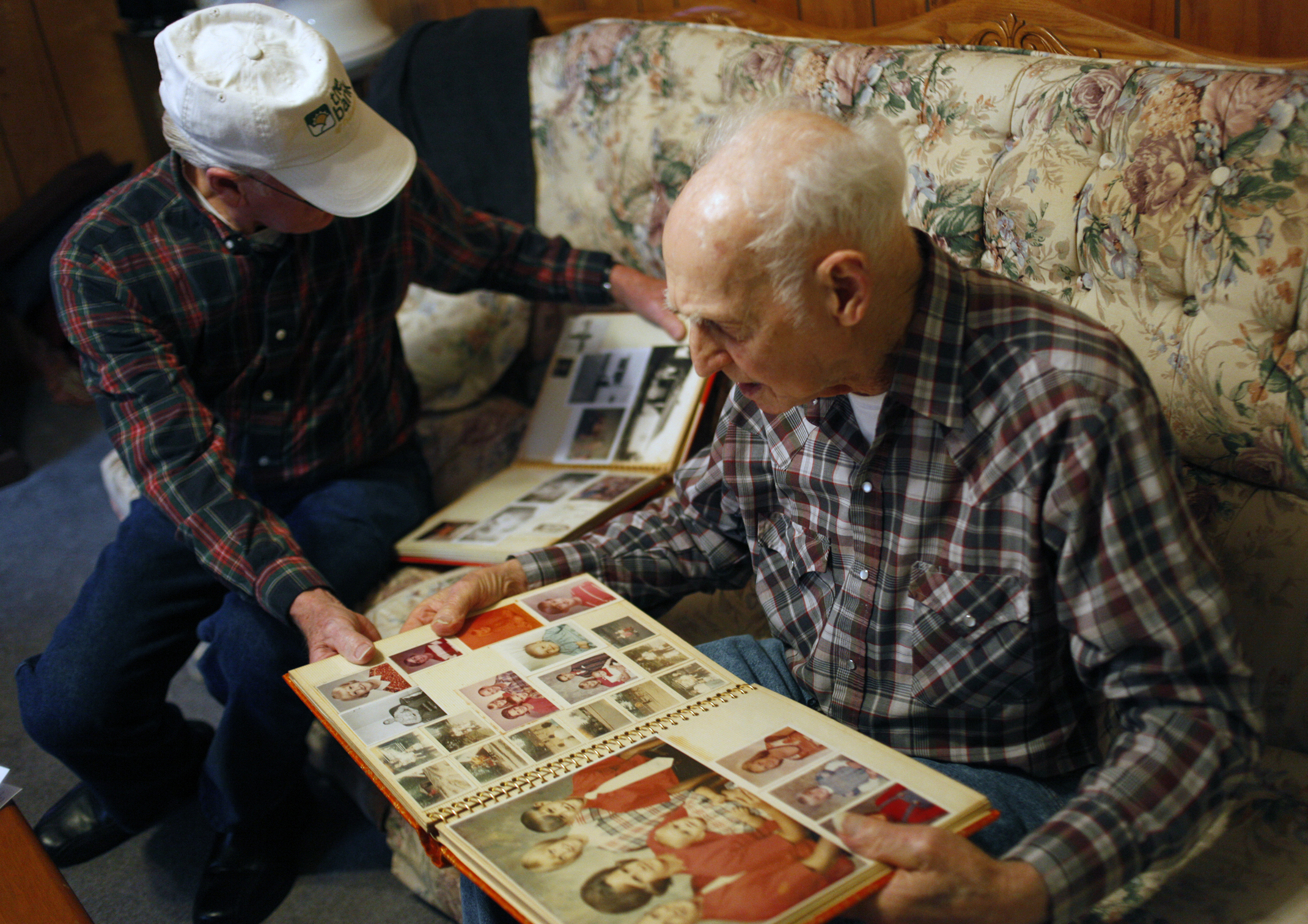After 62 years, Korean War veteran's remains to return to his Grundy County home today (with video)
Friday, January 1, 1904
IF YOU GO* What: Public memorial service for Pfc. Glenn Schoenmann* Where: Grundy County High School gym in Coalmont, Tenn.* When: 1 p.m. CST SaturdayRECENT LOCAL VETERANS' REMAINS RETURNED• U.S. Army Spc. Marvin Foster Phillips' remains were identified and returned to his family in September 2011. He was killed in a helicopter crash during a combat mission in Vietnam in 1965.• U.S. Army Sgt. 1st Class Lewis Brickell's remains were identified and returned to his family in October 2009. He had fought in the Korean War and went missing during an infantry assault in 1950.• U.S. Army Chief Warrant Officer Kenneth Stancil's remains were identified and returned to his family in October 2009. Stancil had fought in the Vietnam War and went missing in 1965 after his helicopter crashed in the jungle.Source: Times Free Press archives
TRACY CITY, Tenn. - Pfc. Glenn Schoenmann visited his Grundy County home here for a few days in 1950. He watched the red-and-white beef cattle lumber along on the mountain farm where he and his six brothers and sisters worked morning and night.
The 20-year-old Army private had taught his younger brothers how to milk the six dairy cows they kept, just as his older brother, Ernest, had done for him.
At the end of this brief visit he climbed in the car with Ernest and the pair drove to Nashville. In the big city, Glenn would board a bus and head to California and then on to Korea, where war had begun.
His soldier buddies and newspaper clippings recounted fierce fighting and heavy casualties.
On the ride Glenn turned to his brother Ernest.
"I don't think I'll ever come back alive," Glenn said.
"Don't talk like that," Ernest told his little brother.
Today, after 62 years of waiting, the Schoenmann family will welcome home the remains of their brother Glenn.
Raymond Schoenmann, now 80 years old, was like Glenn's twin. The pair guided a double shovel behind a mule together, farming hay and corn on long summer days.
For fun they'd rush to finish their chores in the evening so they could gather around the radio and listen to "The Lone Ranger."
The boys would hike to the gulf and push boulders down or spend afternoons squirrel hunting. Glenn was a crack shot.
Months after Glenn left for Korea, Raymond remembers he was working in the field when he saw a car come to the family home. He knew something wasn't right.
The driver carried a telegram.
When his mother read the message, that her boy was Missing In Action, she broke down sobbing.
Raymond stood there with her, but the 18-year-old could hardly bear his mother's grief. He held back tears long enough to walk out to the barn and cry alone.
Glenn was captured in the first year of the war. The family held out hope for the next three years that he was still alive. But when officials called a cease-fire in 1953 and traded prisoners of war, Glenn wasn't on the list.
Glenn's mother, Minnie Agnes Schoenmann, wrote letters over the years, trying to find out what happened to her son.
Answers never came.
She died in 1993 and is buried alongside her husband and much of the Schoenmann family in the Brown's Chapel Cemetery in Palmer.
News, at last
In 2004 the family received a letter from the Army that finally revealed details of Glenn's death. The young private was in an infantry regiment near the Chosin Reservoir in North Korea. The unit was attacked by "an overwhelming Chinese force on the night of 17 November 1950."
Glenn's unit was cut off from reinforcement. U.S. warplanes dropped in supplies, and soldiers from nearby units tried to break through with artillery and tanks.
But they couldn't reach the men.
Glenn's commanding officer was mortally wounded and captured as the soldiers tried to break through enemy lines. Glenn's unit scattered, some reaching safety; others were lost.
Glenn evaded the enemy forces for two or three days before being captured on Dec. 2, 1950.
By the end of the month he and his fellow POWs were dead.
Hope for more
About a year later Glenn's nephew, Dennis Schoenmann, Ernest's son, was contacted by an Army official through an online genealogy website. Officials with the Joint POW/MIA Accounting Command in Hawaii took DNA swabs from some of Glenn's siblings and said they'd be in touch.
Glenn's sister, Edna Kilgore, 83, said that after they took the samples she figured they'd have news soon, in a few months or maybe a year.
This past Thanksgiving the four surviving siblings were together and Glenn came up in conversation. They figured maybe it was time to make a memorial, put something up in case they never received Glenn's remains.
The veterans who came home alive sometimes got parades, sometimes a simple celebration with family. Those who died and whose bodies returned were buried.
The family had held no funeral for Glenn; there was nothing to bury.
A few days after everyone had gone home Ernest got a call in Creve Coure, Ill., where he lives, that the military had positively identified Glenn's remains and they would come home after the holidays.
"We're so happy, so happy to be able to have closure and have him," Edna said. "We're so happy that he's getting recognition."


